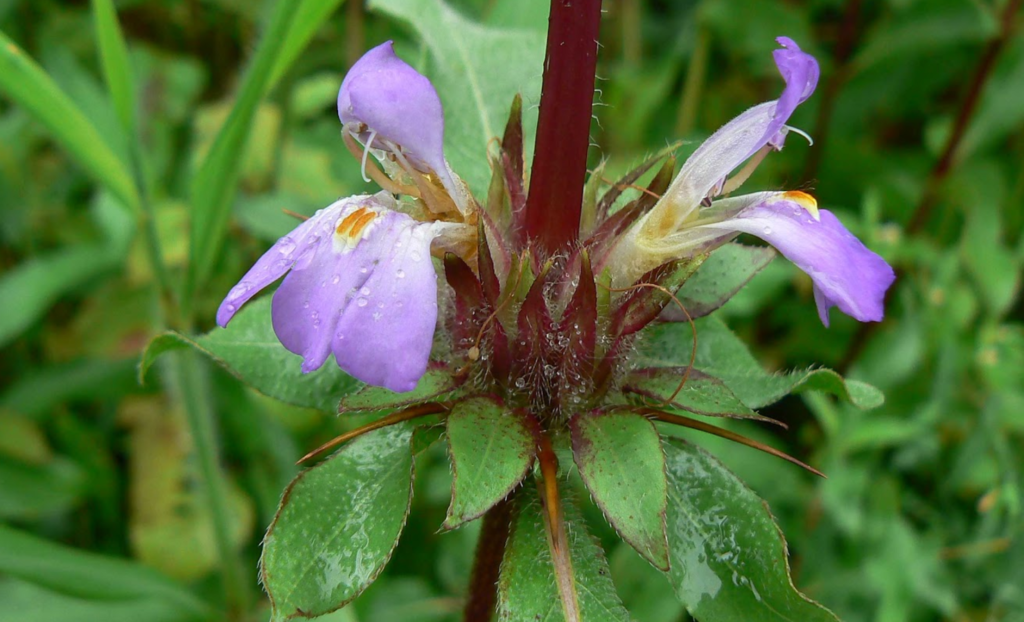 Hygrophila (asteracantha longifolia) is a traditional Indian medicine, which is also used in Ayurvedic medicine.
Hygrophila (asteracantha longifolia) is a traditional Indian medicine, which is also used in Ayurvedic medicine.
It is reported to have a beneficial effect on glucose disturbances, also known as diabetes, along with numerous other benefits, such as for liver problems. These are just two of the many benefits that you gain from this miracle herb supplement, which reportedly works well as an aphrodisiac and as a diuretic as well.
Currently there isn’t a whole lot of information on this herbal supplement that can be stated as scientifically accurate. However, nearly everyone believes that it works well for glycogen synthesis in muscle tissues and the liver, and it also protects the brain and liver from lipid peroxidation.
This makes it similar in function to Vitamin E, and there is no reason to believe that is one of the reasons why it is catching on in popularity as well.
Where does hygrophila come from?
The hygrophila plant can be found commonly in the sub-tropical and tropical regions of India, and in various other parts of the world, like Nepal, Malaysia, Sri Lanka, Burma and the Philippines.
The plant generally grows in freshwater swamps, ponds, near river beds, and in stagnant streams. It has often been seen growing luxurious in low lands that receive plenty of water.
However, due to industrialization, the natural habitat of this miracle plant is fast disappearing, which would be bad news, because it has got some incredible medicinal uses and health benefits to offer.
What are the medicinal uses of hygrophila?
There are lot of medicinal uses that hygrophila can be used for that include the treatment of diseases, mainly of the blood, and enhancing sexual performance among other conditions [1].
The plant has been used for a long time for controlling, preventing, treating, and improving a whole host of diseases. Extensive research on the medicinal uses of the plant has revealed that it can also improve the patient’s condition, by reducing testosterone production. It also disrupts the regular working mechanisms of hypothalamic pituitary gonadal axis.
Due to the fact that hygrophila has been used primarily in Ayurvedic medicine, the medicinal uses generally include information relating to Ayurvedic treatments. It has been said that the extract of the plant is useful for administrating the following:
- Protecting the liver
- Breaking and expulsing kidney stones
- Nourishing cells in the body
- Improving body strength
- Strengthening and improving the genital system
These are just some of the uses of hygrophila, which have enabled it to become one of the most popular herbs in Ayurvedic medicine.
What are the health benefits of hygrophila?
Hygrophila has reportedly got a whole host of useful health benefits, which have allowed it to become one of the most sought after herbal supplements. It is commonly used in medication, due to its diuretic properties. Research has revealed that it contains certain medically active compounds, which provide a whole host of benefits.
There are a number of alkaloids present in the plant, which include mucilage, fixed oil, and mineral salts.
The seeds of the plant also contain enzymes, sugars, and semi-drying oil, which provide health benefits. The essential oils found in the roots of the plant, contain bacteriostatic action against gram negative and gram positive organisms.
The entire plant has got diuretic properties, and is therefore used commonly in treating craw-craw, stomach ache, catarrh, anuria, hydropsy, and blennorrhoea. The entire plant and its ashes and roots can be used as cooling medicine, and due to its diuretic properties, is very useful against cases of rheumatism, dropsy, hepatic obstruction, etc.
When hygrophila is mixed with another similar plant, kisâdor, it can help bring about menstruation, especially for young mothers that are weaning a baby. The plant also has properties that help against fever, and bathing in water that has been soaked with its leaves and boiled, is said to break fever. The plant also works remarkably well against the sting of a sting-ray on a foot, by creating a concoction of the plant through bathing and fumigation.
The stems and leaves of the plant are burnt and the smoke is used to fumigate the patient’s eyes in order to treat corneal ulcers. The seeds of the plant are diuretic and demulcent. Here are a few more health benefits of the plant:
- The roots and leaves have diuretic properties
- It helps in treating urinary cystisis and calculi
- The seeds are useful in increasing libido
These are just some of the many great benefits that are provided by this medicinal herb plant, and further research conducted on it, will surely confirm that there are a lot of great benefits it offers.
What are the side effects of hygrophila?
The best part about hygrophila is that this plant has very few reported side effects, and none of them are serious. There has been research conducted on the possible side effects caused by consuming the plant, or mixing it with other medication. However, there is no extensive scientific data that has been compiled on the list of possible complications caused by the herbal supplement.
People that end up taking hygrophila may experience side effects, but that would be in extremely rare cases, and in the event of something serious [2]. You should always consult your doctor if you observe any side effects or adverse reactions that don’t go away after you take the medication.
Summary: Hygrophila is being hailed as one of the best healing herbal extracts in Ayurvedic medicine. It has a lot of great healing qualities, and helps people fight against liver problem, and those that are suffering from sexual dysfunctions.
References
1. http://www.jakraya.com/journal/pdf/7-vriArticle_2.pdf
2. http://www.jpcbs.info/2015_3_3_8_Neharkar.pdf
http://bodynutrition.org/hygrophila/
No comments:
Post a Comment